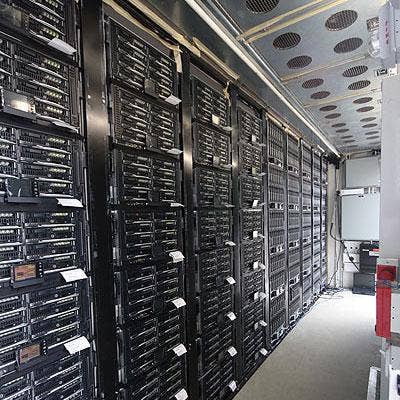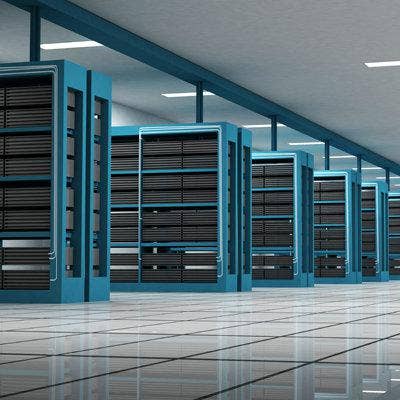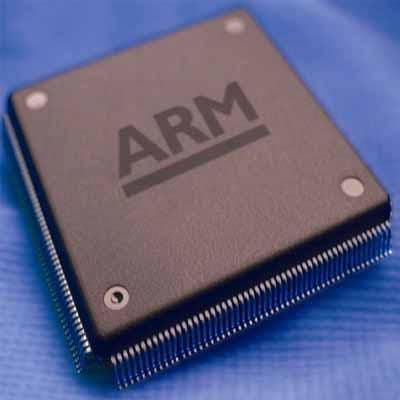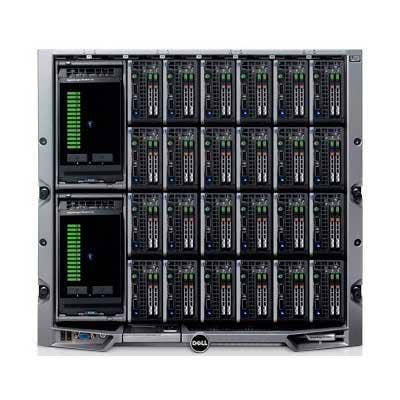The 10 Biggest Data Center Stories Of 2012

Ch-ch-ch-ch-changes In The Data Center
2012 was a year that saw power consumption and green power issues come to the fore, including controversy over the way power consumption trends were presented in the industry's most widely read report.
It was also a year that saw data center companies looking to mergers and acquisitions to increase scale, even as massive changes in technology forced them to address new issues in how their users conduct operations.
2012 also was a year in which data center disaster recovery plans passed the ultimate test after Superstorm Sandy devastated the Northeastern U.S.
CRN invites you to turn the page for a review of the top data center news stories of 2012.

10. Criticizing The Research
For 2012, the most talked about research on the data center business, a massive story in the New York Times about the huge waste of power in data centers, was also the most panned.
In September, the Times criticized the data center industry for wasting up to 90 percent of the power it pulls from the electrical grid and for the pollution caused by its backup generators -- but not without backlash from the data center industry.
As CRN sister publication InformationWeek's response, typical of many, notes, the Times article ignored both moves by data centers to take advantage of new power-saving techniques and reports showing how data center power consumption has been rising less than expected.
At least the Times story brought the debate over data center power consumption to the open.

9. Server Business Suddenly Not So Hot
Despite years of predictions that adoption of virtual servers and a lousy economy would kill the physical server market, that didn't happen.
Until 2012.
Server vendors as a whole saw sales fall year-over-year in the first quarter, second quarter and third quarter of 2012. However, in all three quarters, the total number of servers sold rose year-over-year, indicating that the average selling price per server continues to fall quickly.
Contrast this to 2011, in which both server revenue and shipment rose over 2010.
For the year, HP, IBM and Oracle took big hits in the server business, while Dell and relative newcomer Cisco were able to grow their business. Also a winner: The "other" server vendors, likely including the large data center companies like Google, which rolls its own servers.

8. Oracle Pulls Pin On Hand Grenade In Knife Fight With HP
The Unix server business of Oracle and HP was pretty much blown up thanks to Oracle's decision to stop developing its software for HP's Itanium servers and the subsequent lawsuits between the two.
In the August case, the judge ruled for HP over Oracle, saying that Oracle was indeed legally obligated to continue developing software for the HP Unix servers. As a result, HP Unix customers now have the pleasure of depending on a not-so-happy Oracle for future software development.
The battle left both companies battered, with their Unix server sales plummeting. Oracle, which had been moving away from general purpose servers to focus on integrated server-storage-software offerings, is probably less concerned about the loss of its Unix server business than is HP. But, it was a Pyrrhic victory, as the HP Unix server base was the largest platform on which much of the Oracle software was sold.

7. ARM Pushes Into The Server Business
According to Gartner, 98.6 percent of the servers shipped worldwide in the third quarter of 2012 were based on the tried-and-true x86-compatible processors.
2012 saw the move by ARM-based servers into the data center. The new servers, including models from Penguin Computing and Dell, followed HP's 2011 lead to test whether businesses would consider ARM-based servers as an alternative to their Intel-based and AMD-based models.
Meanwhile, several members of the OpenStack cloud community in July collaborated to make an ARM server-based cloud available for free test deployments, but not yet for production runs of cloud applications.
ARM's attraction lies in its power consumption, which is a fraction of that of traditional server processors. And while existing applications need to be rewritten for ARM-based servers, ARM prophets point out that many applications destined for the platform have yet to be written, and that existing programming tools cover ARM.

6. Yahoo, Dell The 'Greenest' Data Center Builders
In Greenpeace International's annual look at how data centers have adopted "green" power as a way to protect the environment, Yahoo and Dell essentially tied for the top spot in the organization's Clean Energy Index.
Greenpeace estimated that 56.4 percent of Yahoo's data center power came from clean energy, which was a statistical tie with Dell, which Greenpeace estimated got 56.3 percent of its power from clean energy. They were followed by Google at 39.4 percent and Facebook at 36.4 percent.
At the bottom of the list was Oracle at 7.1 percent and Salesforce.com at 4.0 percent.

5. SDDC -- The Software-Defined Data Center
Every year has its list of new buzzwords, and for the data center business in 2012 that was SDDC.
In July, VMware's $1.2-billion acquisition of software-defined networking startup Nicira suddenly turned the industry on to the idea of "SDN." So what do you get when you combine SDN with software-defined computing (a.k.a. server virtualization) and software-defined storage (let's ignore the fact that no one knows what that is)? You get the software-defined data center, or SDDC.
The idea of the SDDC, where all data center operations can be handled through virtualized resources, became the newest buzzword in the data center industry in 2012. Not that anyone actually has SDDC in operation, or even in the planning stage. However, it became a phrase on which several vendors trying to generate their own buzz hang their offerings.

4. Data Center Acquisition Spree
2012 saw both large and small data center operators increase their scale via acquisitions. In the U.S., this included Alpharetta, Ga.-based ByteGrid's December acquisition of a 77,322-square-foot facility in Atlanta; San Francisco-based Digital Realty Trust's November acquisition of a 271,000-square-foot property in Totowa, N.J., to redevelop as a data center; and Ashburn, Va.-based RagingWire Data Centers' October purchase of 75 acres of land on which it plans to build a 750,000-square-foot data center
Tampa, Fla.-based Carter Validus Mission Critical REIT purchased at least five different data centers in the U.S. in 2012. And, Data center companies Xand and Access Northeast in September merged to form a single company with three data centers in the Northeastern U.S.
One of the biggest single deals was the September move by San Francisco-based 365 Main to pay $75 million acquire 16 data centers totaling about 280,000 square feet from Redwood City, Calif.-based Equinix.

3. Shift In Client Devices
Corporate data centers in 2012 found they could no longer put off a shift in their corporate users' devices from the PC to, well, whatever the users brought in to the office on any particular day.
The slide in PC sales accelerated in 2012, with third-quarter PC shipments down 8.3 percent over the same period in 2011, Gartner said. Meanwhile, IDC estimated third-quarter smartphone shipments grew 45.2 percent compared to the year-ago period, whereas tablet PC sales grew 49.5 percent during the same period.
For corporate data centers, the pressure is on to accommodate business users' own choice of mobile device, which increasingly is not a traditional PC. This bring-your-own-device (BYOD) move brings in all sorts of new management hassles, including how to secure corporate data while making sure authorized users can access it from any type of device, as well as how to make applications work across all those devices.

2. Dell Transitions To Being A Data Center-Focused Company
Dell's terrible showing in the PC business grabbed headlines in 2012, but hidden under those headlines was the fact that poor PC sales are nothing to worry about when you are focused on becoming a supplier of higher-margin hardware, software and services to corporate and third-party data centers.
That's what Dell did. The company in 2012 increased server, networking and Dell-branded storage sales and related services significantly over last year even as its low-margin PC sales fell and its sales of non-Dell-branded storage disappeared. One of Dell's biggest acquisitions, its $2.4-billion buy this Summer of Quest Software, expanded its reach into the security and data center management markets.

1. Data Centers Passed The Superstorm Sandy Test
The massive damage caused in the Northeastern U.S. by October's Superstorm Sandy, which resulted from the collision of a late-season Atlantic Ocean hurricane with a cold weather front from Canada at the same time a cyclical tidal surge hit the coast, gave data centers their biggest challenge to date.
It was a challenge that showed just how well the industry took to heart lessons learned during the 2005 devastation caused by Hurricane Katrina.
While many corporate data centers were hit by severe flooding, the primary damage was sustained by those in the basements of buildings. Companies that moved their data centers to the second floor or higher in a worst-case scenario only lost power as generators were flooded or ran out of diesel fuel. Meanwhile, third-party data centers went into well-practiced disaster recovery mode to ensure that personnel and supplies were on hand to keep customers' on-line.